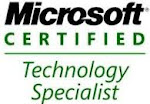Information
management policy is a set of rules for content. Each rule in a policy is
called as policy features. Information policy management features specify the content
auditing, content accessing and how long that information retained.
We can
associate a policy with a library, list or content type.
Associate
policy features with site collection policy and associate with content type or
list/library: Top level
site collection will have site collection policies to create site collection
policies. After creating site collection policies, we can export to other site
collections to standardize policies across the organization.
Associate
policy features directly to a content type and add that content type to lists:
We’ll use
whole site collection associated with a content type in the site content type gallery
of the top level site. Every item in that content type and every item inherit
the original content type will have a policy.
Associate
policy features directly with a list or library: This method will applicable
for only for the list does not support multiple content types. This will be
useful for applying for single list/library.
We can
configure Information Rights Management using the steps below,
Navigate to Security in SharePoint central Administration,
On Information Rights Management section we have following options,
If we don’t want to use IRM select Do not use IRM on this
server option
Select Use the default RMS server specified in Active
Directory option to specify the RMS server in the Active Directory Domain
Service (AD DS)
Select Use this RMS server option to enter url to specify
the URL with protocol. Click on Ok.




